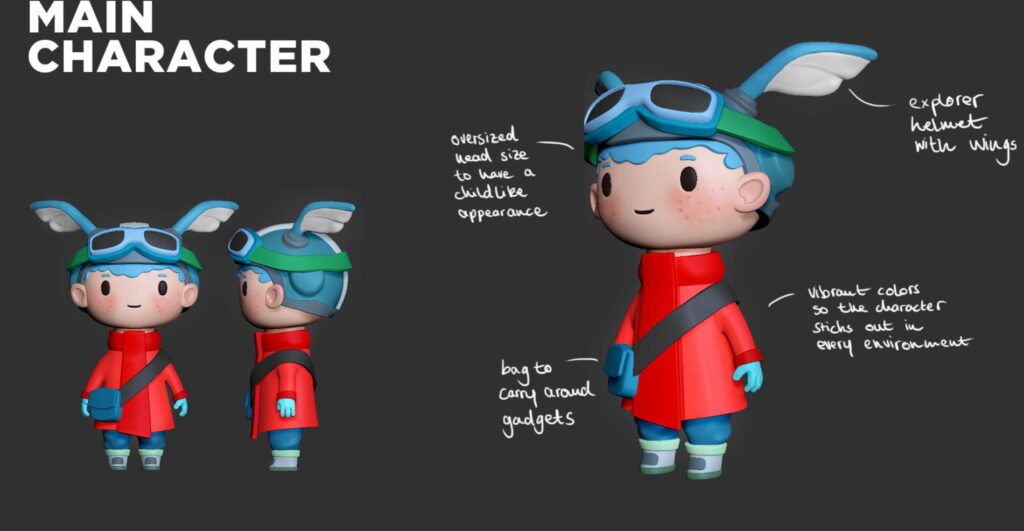The article discusses the importance of 3D graphics in creating immersive gaming environments. It outlines the process of building video game worlds, including the creation of storylines, characters, and environments, and the role of 3D graphics in achieving depth, detail, and realism. The article also explores the use of development tools such as graphics engines and 3D modeling software, as well as the challenges of optimization, innovation, and cost. Finally, the article delves into the future of gaming, including emerging technologies such as virtual reality and real-time ray tracing, and the continued importance of 3D graphics in creating immersive gaming experiences.
Building Worlds: The Role of 3D Graphics in Creating Immersive Gaming Environments
Introduction
Video games have come a long way since their humble beginnings as simple 2D experiences. Today’s games are fully immersive worlds with extensive 3D graphics, intense storylines, and unique gameplay features. The power of 3D graphics cannot be overstated when it comes to creating these immersive gaming environments. In this article, we’ll examine the process of building these worlds and the crucial role that 3D graphics play in the process.
Creating a World
The starting point for any video game is the creation of the world in which it takes place. This involves designing levels, environments, characters, and objects. Each of these elements is essential to creating the immersive experience that game developers strive for.
Designers start by creating a storyline that includes various environments and locations. Character designs are also essential, as they provide a visual representation of the game’s personalities. Once the basic story and characters are established, level designers start building the environments.
Level design in gaming involves building and refining environments that the player can explore. This includes everything from the layout and design of buildings to the placement of objects within each environment. Once the level design is completed, developers begin working on the game’s mechanics and gameplay features.
The Importance of 3D Graphics
3D graphics are a critical component in creating immersive gaming environments that capture players’ imaginations. 3D graphics provide the depth, detail, and realism that gamers crave. These graphics allow developers to create realistic worlds with textures, lighting, and shadows that mimic the real world.
The use of 3D graphics makes it possible to create realistic characters, objects, and environments. In addition, 3D graphics make it possible to create detailed animations that add to the game’s immersion. The use of advanced graphics engines has revolutionized the gaming industry, allowing for ever more sophisticated and detailed worlds.
The importance of 3D graphics in the gaming industry has also led to a greater demand for skilled graphics programmers and artists. These professionals use the latest technology and software to create the environments and characters that make video games so immersive.
Development Tools
The development of video games requires a range of software and tools. One of the most important tools is a graphics engine that enables the creation of the 3D graphics that make up the game’s world. There are several popular graphics engines, including Unity, Unreal, CryEngine, and GameMaker.
In addition, game developers use a variety of other tools, such as 3D modeling software, sound editing software, and animation software. These tools help developers create realistic environments, characters, and animations that make the game more immersive.
While the use of tools is essential in game development, it’s also important to know how to properly use them. Game developers should continually learn and stay up to date with the most current technology and software to remain competitive in the industry.
Challenges
While the use of 3D graphics has made it possible to create immersive gaming environments, it’s not without challenges. One of the biggest challenges in game development is optimization. As games become more advanced and complex, they require more powerful computers and graphics cards. Developers must ensure that their games can run on a wide range of devices.
Another challenge is the creation of unique gameplay features. As more games hit the market, developers need to find ways to differentiate their games from the rest. This requires innovation and creativity in game design, something that’s easier said than done.
Finally, there is the challenge of cost. As the gaming industry becomes more competitive, the cost of producing video games continues to rise. As such, developers often need to secure larger budgets to bring their games to market.
The Future
The future of gaming is exciting, as new technologies emerge that will make games even more immersive than current titles. One technology that will revolutionize gaming is virtual reality. VR technology provides a whole new level of immersion, allowing players to feel like they are truly in the game’s world.
Another emerging technology is real-time ray tracing, a technique used to create realistic lighting and shadows in games. This technology will not only make games more immersive but also make them more realistic than ever before.
The gaming industry is continuously evolving, and the use of 3D graphics is at the forefront of these changes. As more and more players demand immersive gaming experiences, developers will need to continue creating sophisticated and realistic environments that push the boundaries of what is possible with 3D graphics.
